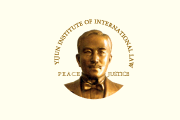CWR > Volume 3(2); 2017 > Articles
Research Paper
Published online: September 1, 2017
DOI: http://dx.doi.org/10.14330/cwr.2017.3.2.04
Central and Peripheral Reforms of Global Trade Governance
Yan Wang
Guangdong University of Foreign Studies
Baiyun Avenue North 2, SEIB, Guangdong University of Foreign Studies, Guangzhou, P.R. China.
Corresponding Author: swallow_wang79@163.com
ⓒ Copyright YIJUN Institute of International Law. This is an Open Access article distributed under the terms of the Creative Commons Attribution Non-Commercial License (http://creativecommons.org/licenses/by-nc/3.0/) which permits unrestricted non-commercial use, distribution, and reproduction in any medium, provided the original work is properly cited.
Abstract
To promote global trade governance, both central and peripheral reforms occur in multilateral and regional trade agreements. The central reforms are suggested to enhance the WTO's efficiency in trade negotiations by engaging in 'mini-multilateral' negotiations and soft law-making or to expand its current advantage in dispute settlement by extending its dispute jurisdiction to investor-state disputes or trade disputes arising from PTAs. The peripheral reforms develop in two different routes; one is rule-based and is carried out by high-standard PTAs, and the other is relation-based and is exemplified by "the Belt and Road" Initiative proposed by China. While peripheral reform fragments international law, various methods of multilateralizing regionalism are suggested, such as the incorporation of the third-party most-favoured-nation clause, the simplification of the rules of origin, and the construction of multilateral agreements through the 'building blocs' of PTAs. Most of these reforms make achievements to some extent, although they also have deficiencies.
Keywords : Central Reform, Peripheral Reform, Global Trade Governance, WTO, Preferential Treatment Agreement





